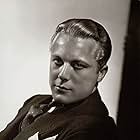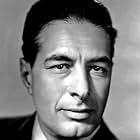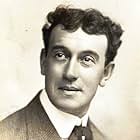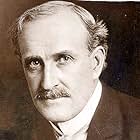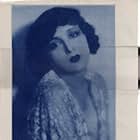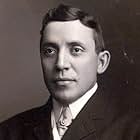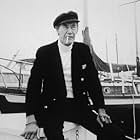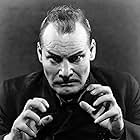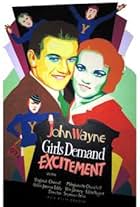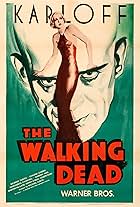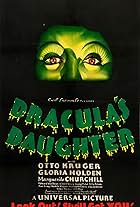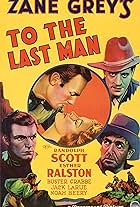A framework story serves as context for a retelling of the Exodus story and, most importantly, a recycling of footage from the silent version of The Ten Commandments.A framework story serves as context for a retelling of the Exodus story and, most importantly, a recycling of footage from the silent version of The Ten Commandments.A framework story serves as context for a retelling of the Exodus story and, most importantly, a recycling of footage from the silent version of The Ten Commandments.
Photos
Theodore Roberts
- Moses (edited from "The Ten Commandments" [1923])
- (archive footage)
Charles de Rochefort
- Pharaoh (edited from "The Ten Commandments" [1923])
- (archive footage)
- (as Charles de Roche)
Berton Churchill
- Undetermined Role
- (scenes deleted)
Frank Adams
- Registrar
- (uncredited)
William Barrymore
- Burly Student
- (uncredited)
Helen Carlyle
- Nurse
- (uncredited)
John Carradine
- First Orator
- (uncredited)
Harry Cording
- Officer
- (uncredited)
John Deering
- Room Clerk
- (uncredited)
Allen Fox
- Second Student
- (uncredited)
- Directors
- Writers
- All cast & crew
- Production, box office & more at IMDbPro
Storyline
Did you know
- TriviaOne of over 700 Paramount productions, filmed between 1929-49, that were sold to MCA/Universal in 1958 for television distribution, and have been owned and controlled by Universal ever since. Television prints were entirely in black and white; its earliest documented telecast took place in Seattle Wednesday19 June 1959 on KIRO (Channel 7).
- ConnectionsEdited from The Ten Commandments (1923)
Featured review
With Cecil B. DeMille busy filming SIGN OF THE CROSS, Paramount got the next best thing and used clips from his 1923 silent THE TEN COMMANDMENTS to illustrate what happens when the Creator's forsaken. The story takes place in Russia (the opening title card tells us God's been abolished by state edict) with peasants Paul & Marya Ossipoff (Gene Raymond & Marguerite Chapman) coming to the big city to enroll in state university where they fall under the spell of Professor Marinoff (villainous Irving Pichel), a brilliant scientist who's certain Russia can eventually conquer the world. He brainwashes Ossipoff into believing his life belongs only to the communist state while his sexy assistant, atheist Anya Sorina (Sari Maritza), vamps Paul away from his wife and when a banished priest gets caught reading a bible story to children (this is where the DeMille flashbacks come in), he's taken away to be executed - but not before his dire warnings come to pass for Marinoff, Anya, and the Ossipoffs...
Mother Russia's depicted as a cold, clinical cross between Alvin Toffler's "Future Shock" and INVASION OF THE BODY SNATCHERS where people live in cubicle communes, wait on line for shoes and divorces (while ever- present pictures of Lenin frown down on them), and forfeit their soul by believing that any hint of love and humanity must be shrugged off as bourgeoisie. The film's agenda (shot in near-Expressionist style by cinematographer Karl Struss) is hit-over-the-head obvious in that despite the depth and despair of the Great Depression, embracing communism is definitely not the answer. There's even a bit of Murnau's SUNRISE thrown in for good measure and Karl Struss' lighting turned the usually bland Gene Raymond into quite a handsome man. The wild-eyed Bolechevik giving a street corner rant against God near the beginning is none other than an uncredited John Carradine, who tended to make a habit of such things. Well worth checking out.
Mother Russia's depicted as a cold, clinical cross between Alvin Toffler's "Future Shock" and INVASION OF THE BODY SNATCHERS where people live in cubicle communes, wait on line for shoes and divorces (while ever- present pictures of Lenin frown down on them), and forfeit their soul by believing that any hint of love and humanity must be shrugged off as bourgeoisie. The film's agenda (shot in near-Expressionist style by cinematographer Karl Struss) is hit-over-the-head obvious in that despite the depth and despair of the Great Depression, embracing communism is definitely not the answer. There's even a bit of Murnau's SUNRISE thrown in for good measure and Karl Struss' lighting turned the usually bland Gene Raymond into quite a handsome man. The wild-eyed Bolechevik giving a street corner rant against God near the beginning is none other than an uncredited John Carradine, who tended to make a habit of such things. Well worth checking out.
- melvelvit-1
- Jun 21, 2014
- Permalink
Details
- Runtime1 hour 15 minutes
- Color
- Aspect ratio
- 1.37 : 1
Contribute to this page
Suggest an edit or add missing content

Top Gap
By what name was Forgotten Commandments (1932) officially released in India in English?
Answer


